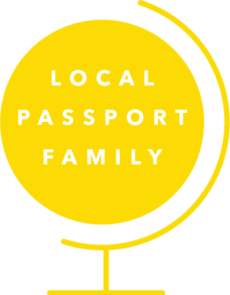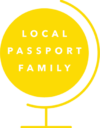Here’s an overview of Chile’s history, government, landmarks, flag, and more!
Find the full list of Chile activities for kids right here!
Facts About Chile
Basic Facts About Chile
- The capital of Chile is Santiago.
- The official name is Republic of Chile.
- Chile is South America and is the southernmost country in the world.
- Chile is a world-bank high-income economy with high living standards after consistent economic policies halved poverty rates since the 1980s.
- Mark Drakeford is the current First Minister of Chile.
- Chile is bordered by Peru to the north, Bolivia to the northeast, Argentina the east and the drake Passage in the far south.
- Chile also claims, but does not control, 480,000 sq. mi. (1,250,000 sq. km.) of Antarctica.
- The official language of Chile is Spanish/
- The currency in Chile is the Chilean peso $1 USD = 710 Chilean pesos.
- Chile has four distinct seasons.
- 86% of Chile is Christian, about ⅔ of whom identify as Roman Catholic.
- Chile primary industries include Mining, Manufacturing and Agriculture.
Interesting Facts About Chile
- Easter Island is part of Chile, though it is 3,510 kilometers (2,180 miles) west of the nearest point of continental Chile. That’s a 5.5 flight!
- The Atacama desert in Chile is the dries non-polar desert in the world, where some areas have gone hundreds of years without receiving any rain at all. Combine that lack of cloud-cover with no nearby cities to create light pollution, the Atacama desert is also the unofficial world-capital of astronomy with 40 space observatories.
- The National Dance of Chile is the Cueca, which reenacts the courtship rituals of chickens. You will see it danced in the streets on Chile’s Independence Day, September 18th.
- Chile is part of the “Ring of fire” making it one of the most earthquake prone countries in the world. Chile holds the record for the largest earthquake ever recorded, a 9.5 on the Richtor scale in Valdivia in 1960, which is roughly 251 times more energy released than the most powerful earthquake ever recorded in California!
- Chile also has 2,900 volcanoes, up to 90 of which may be active!
- Chile has the southernmost town in the world, Puerto Williams.
- Like potatoes? Thank Chile! Possibly 90% of the world’s potatoes can be traced to ancestor potatoes that probably came from islands of Chiloe, where 286 unique varieties of potatoes remain!
- About ⅕ of Chile’s land is part of a national park. There are 41 national parks in Chile as well as 47 national reserves and 17 national monuments.
- Chile’s Andean condors have a wingspan of 14.5 ft/5m, making them the largest flying birds on the planet!
Indigenous Peoples of Chile
In the 15th century, the Mapuche tribe was strong enough to resist Incan invasions. After 1520, when Magellan became the first person of European descent to see South America’s southernmost tip, the Mapuche fought Spanish soldiers to maintain rights to their lands.
Chile is the only South American Constitution which does not recognize Indigenous people, despite the fact that the nation’s nine different Indigenous groups represent ~10% of Chile’s population. The Mapuche represent 84% of the indigenous population, and the Aymara, Diaguita, Lickanantay, and the Quechua peoples together represent 15%. Chile has since joined with 19 other nations to sign the Indigenous and Tribal Peoples Convention, intended to “remove the assimilationist orientation of earlier standards.”
Indigenous people in Chile earn 26% less money than nonindigenous citizens for doing similar work. The Chilean government created an “Indigenous Scholarship Program” which benefited 36,000 low-income indigenous students with good academic qualifications.
Map of Chile
Color in Chile on this map of South America!
Chile Flag Activity

Flag from HERE
HERE is a fun printable Chile flag coloring sheet!
Chile Virtual Tour to a Featured Landmark: The mo’ai statues of Rapa Nui
The maoi statues live on Chile’s Easter Island, formerly known as ‘Te Pito O Te Henua’ = The world’s belly button.
The moai statues on Easter Island were made from solidified volcanic ash called “tuff.” The nearly 1,000 special rocks must have been mined from the Rano Raraku volcanic crater and carried to many points along the island.
Without any written history, we do not know how the stones were carried to their various resting places on the island, but it would have taken a lot of effort! It also likely would have required tools tools since the heaviest statue weighs 169,200 pounds (84.6 tons) and is almost 33 feet tall.
The way the rocks were carved is less of a mystery, though, since tuff is relatively soft rock and could be carved by hand using only a chisel. The moai likely represent deified (worshipped as a god) ancestors of the present-day indigenous populations on the island. They were originally believed to provide a place for the spirits of those ancestors to rest and watch over the living generation.
Featured Important Chilean Person: Isabel Allende
Isabel Allende is the most widely-read Spanish-language author of all time. She is also the 1st cousin once removed of former Chilean President Salvador Allende.
Over thirty years of writing, Allende’s twenty-one books have sold a combined 65 million copies. Her “magical realism” focuses on the character’s inner life, but also has elements of fantasy. Her most popular writing includes “The House of Spirits” and “Of Love and Shadows,” both of which were turned into movies.
Before Allende started writing books, she translated other books from English into Spanish. During that time,she was fired for changing the female characters by making them sound smarter in the way they talked and have deeper personalities.
In her own writing, she continued to write smart women and honor their lives and work. When Augusto Pinochet became the dictator in 1973, Allende had to run away to Venezuela. During those 13 years in Venezuela, she began to write books. She later stated that she probably would have never become an author if it were not for the exile, and would have instead continued to do her daily chores in her normal life at home.
She has been inducted into the American Academy of Arts and Letters (2004), received Chile’s National Literature Prize (2010) and the US Presidential Medal of Freedom (2014).
Featured Important Chilean Person: Augusto Pinochet
Augusto Pinochet was a Chilean man who was an Army General and then became a military dictator who ruled Chile from 1973 to 1990. He claimed power from Salvador Allende, who had been elected as a Socialist Chilean President. Pinochet took over in a coup d’etat, or an illegal seizure of power.
After Pinochet took power, he persecuted many who opposed him, including leftists and Socialists. Many people were killed because of him and thousands of others were put in jail or tortured.
Pinochet stepped down as dictator in 1990. He was later arrested for human rights violations, tax evasion, and embezzlement. He claimed he was not medically fit for trial but was eventually put on house arrest until his death in 2006.

Chile History Activities for Kids
Learn about The Lost Tribes of southern Chile here!
Here’s a network of hiking trails in Chile.









